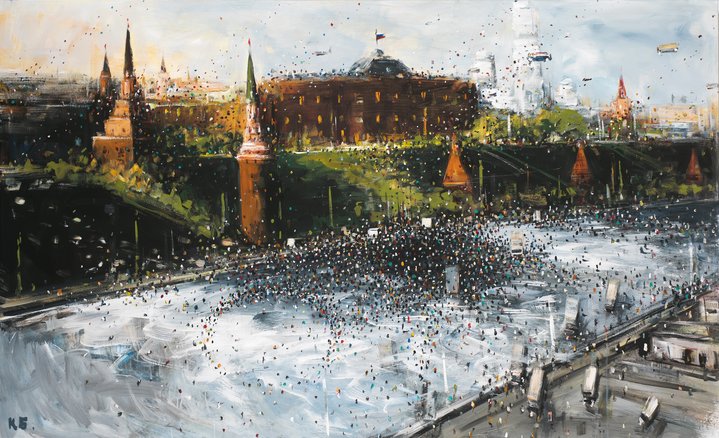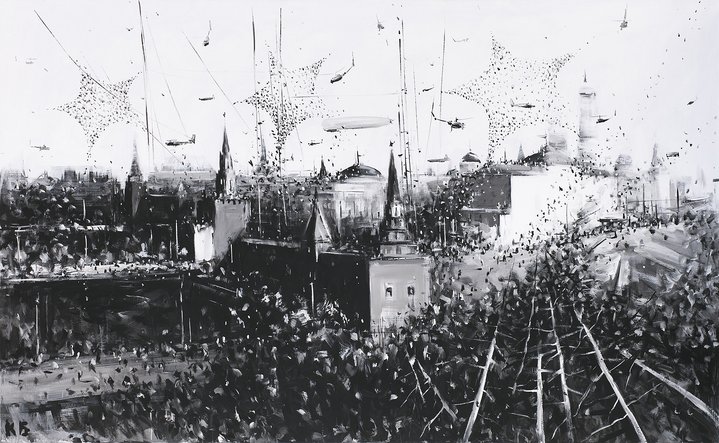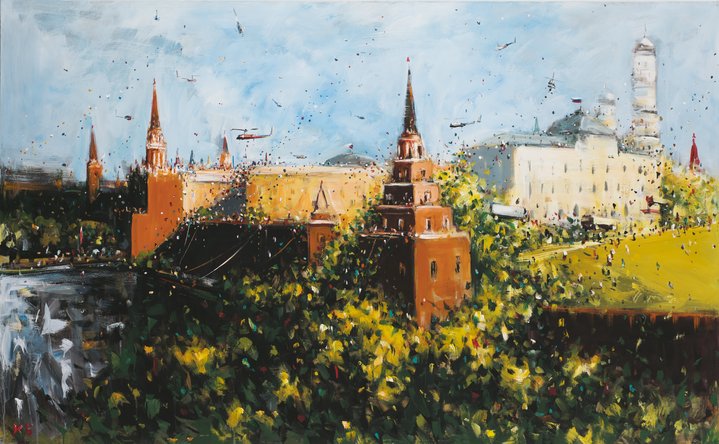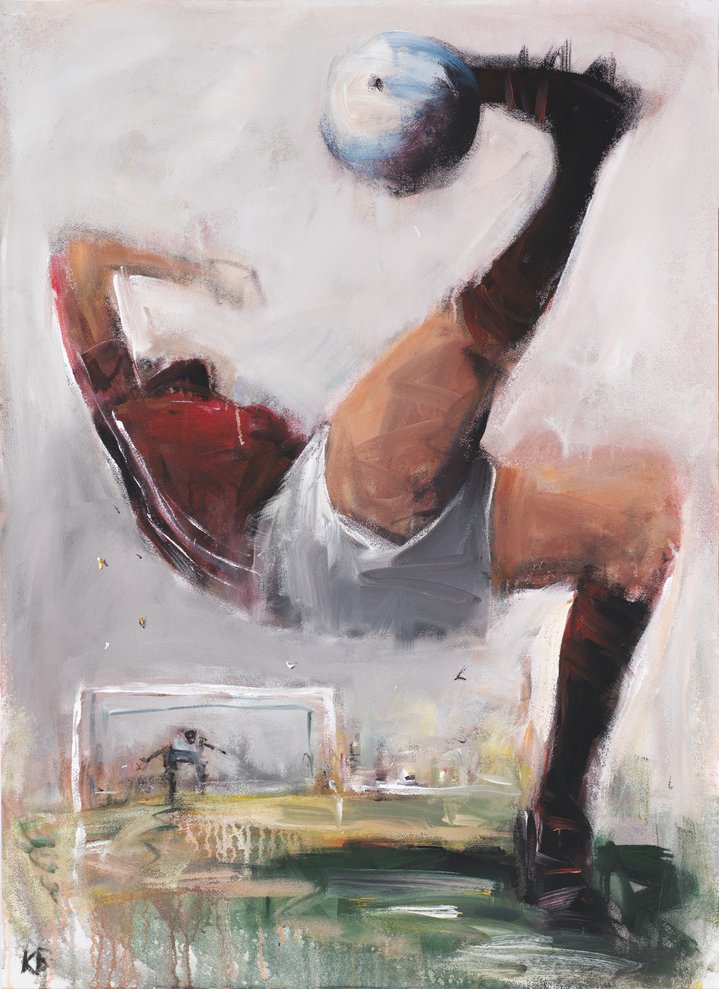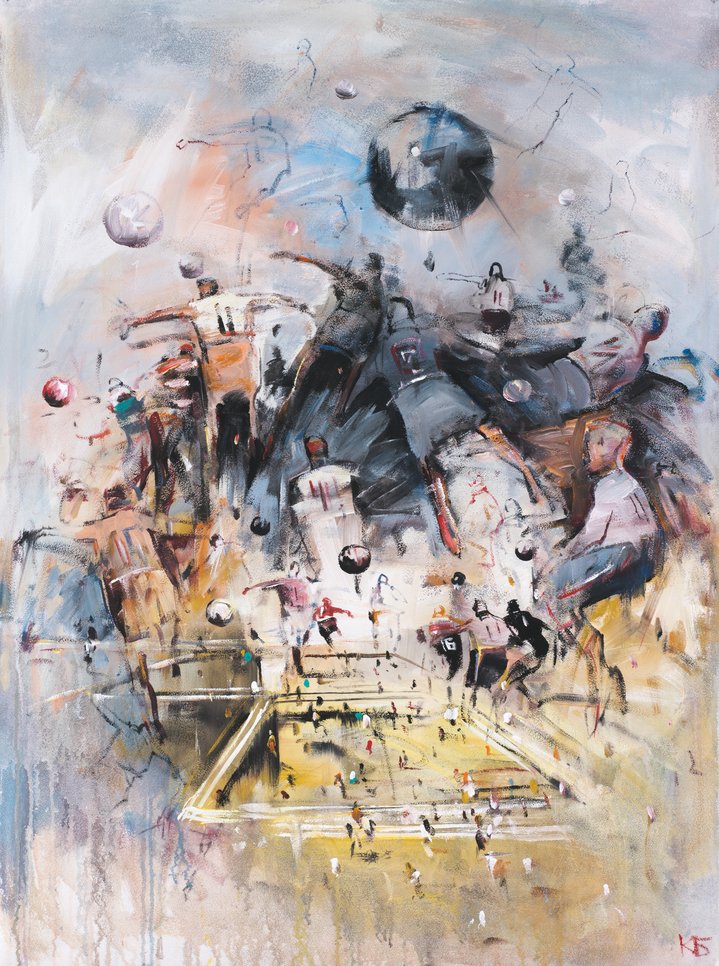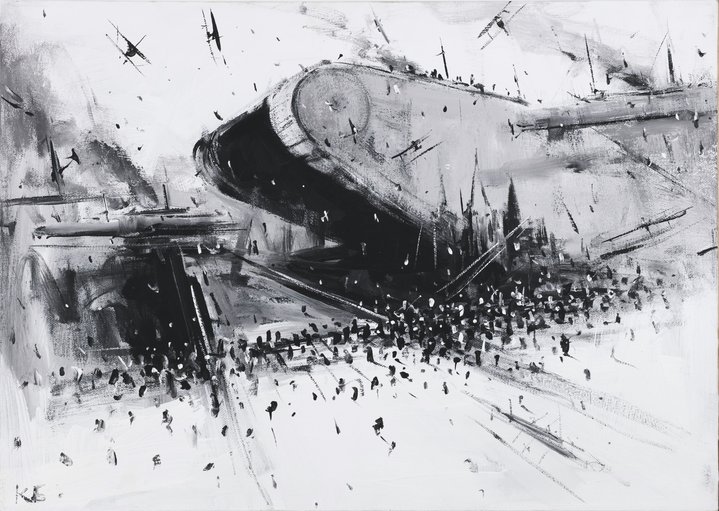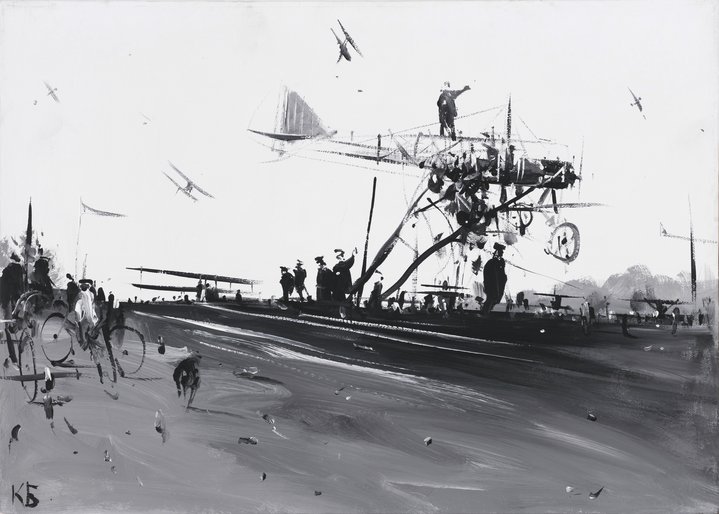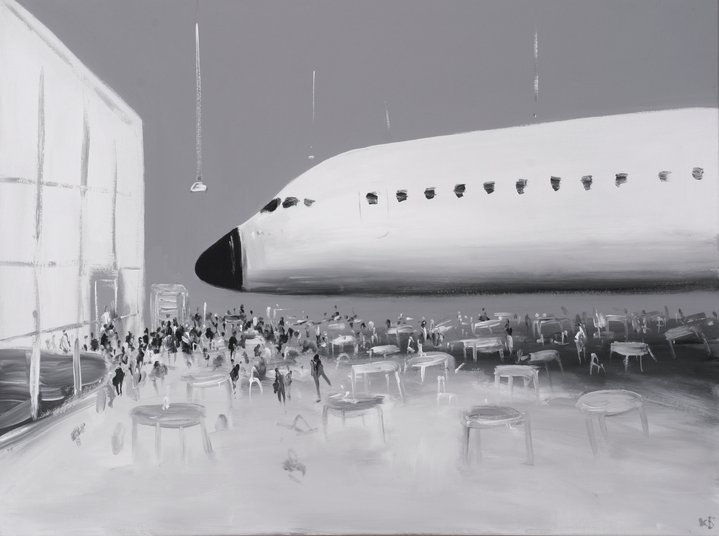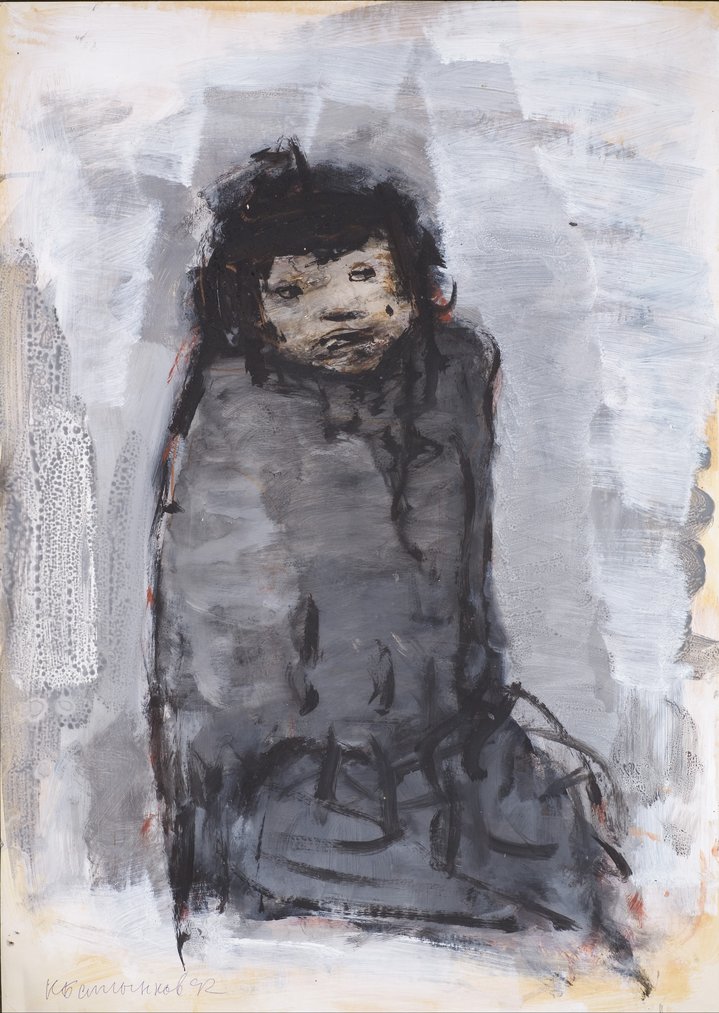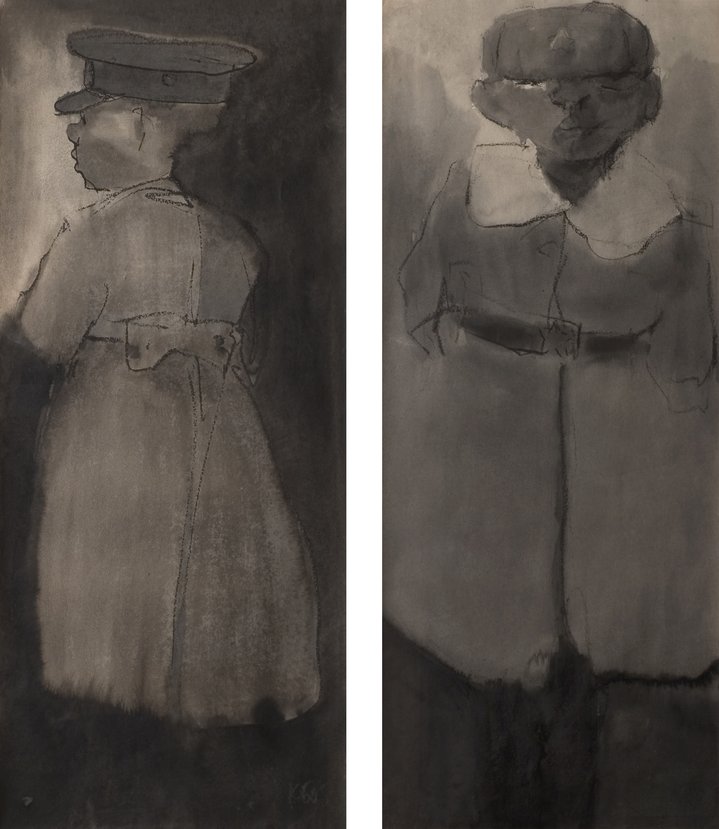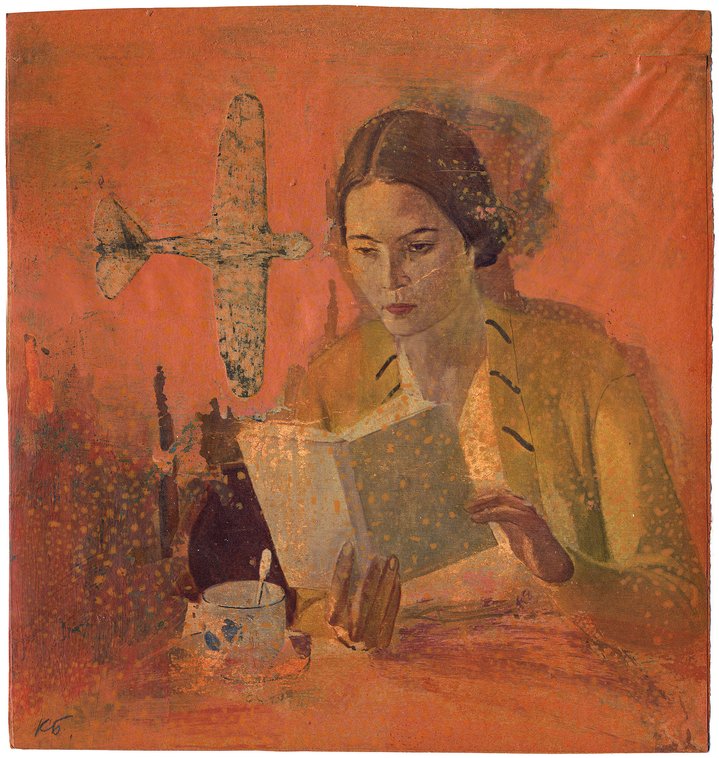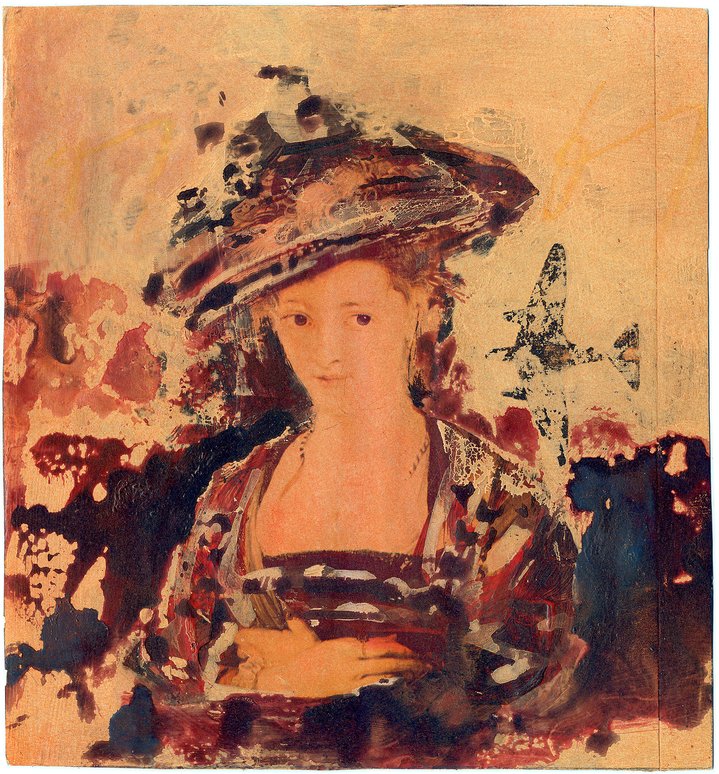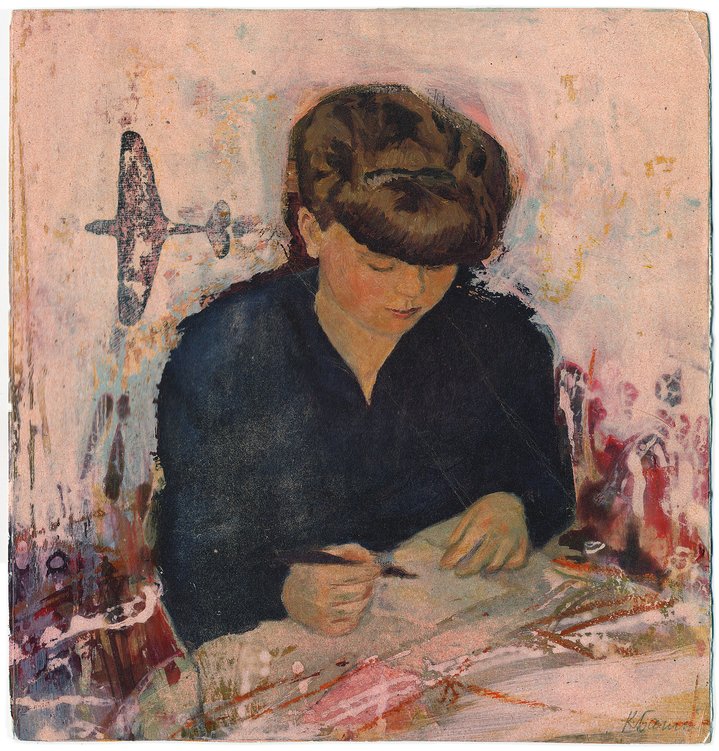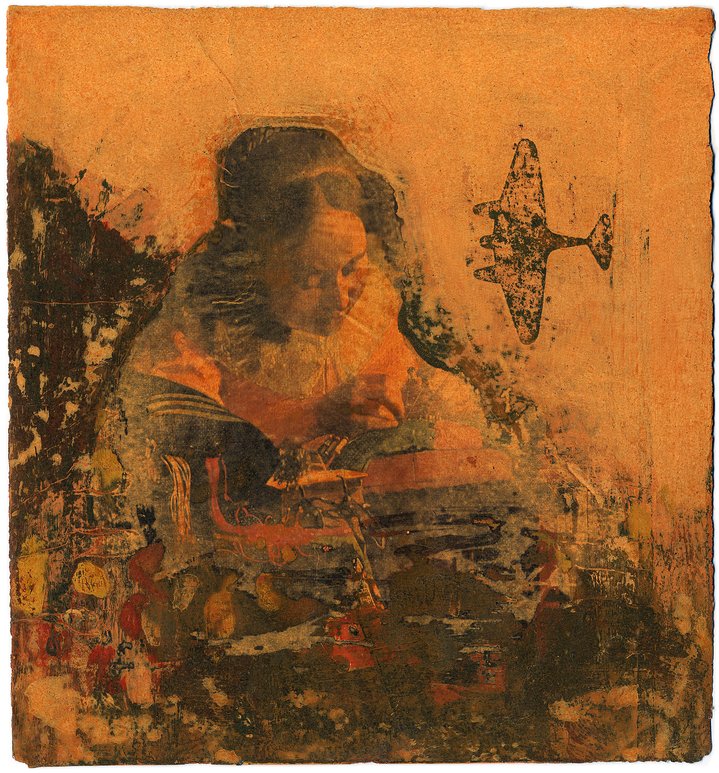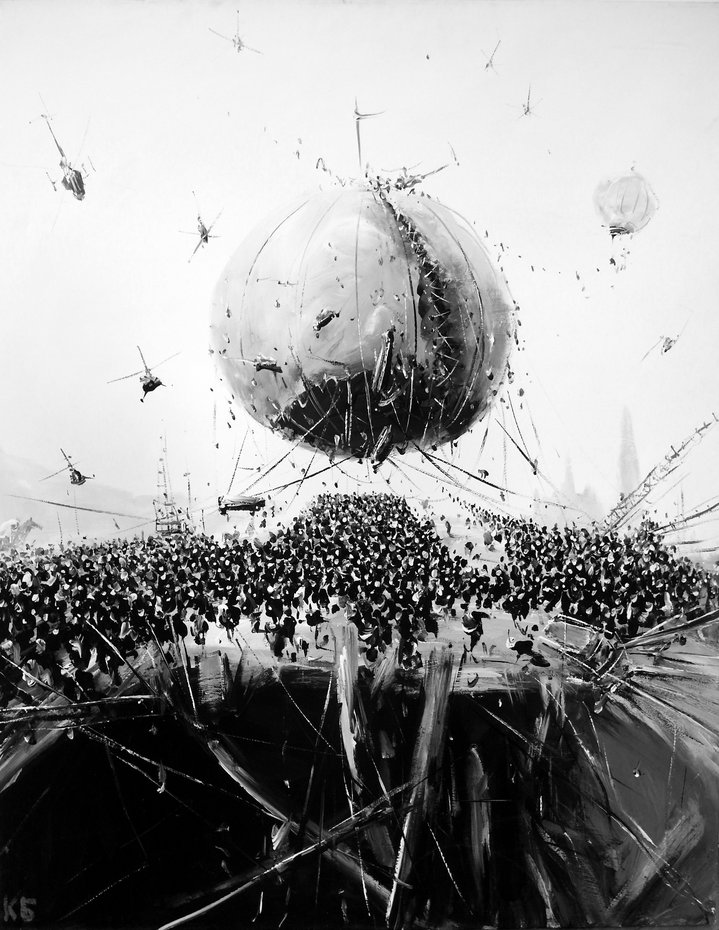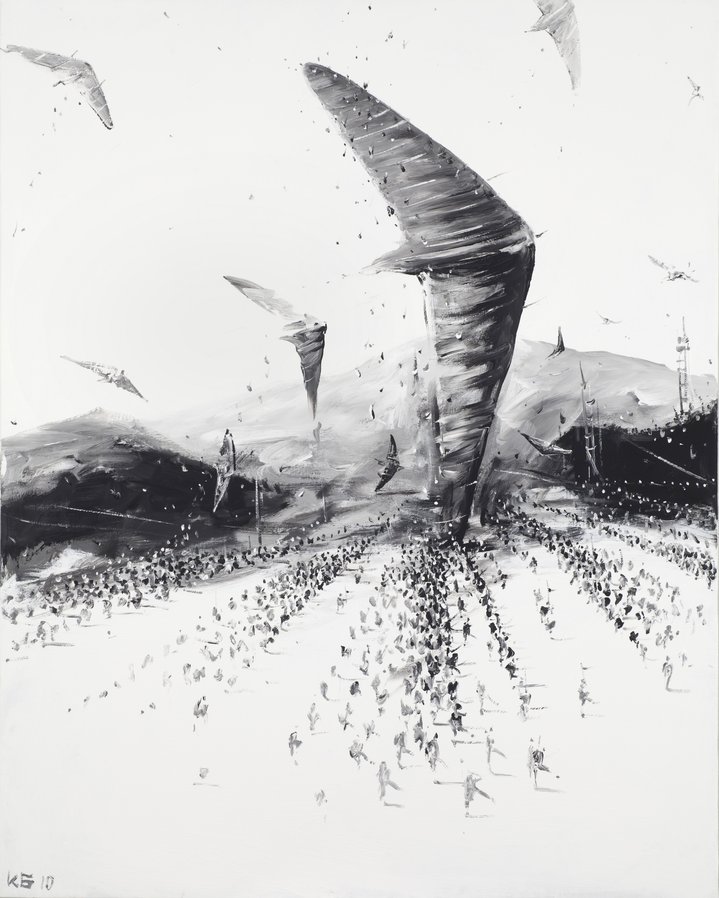Konstantin Batynkov: from snowmen to the stars
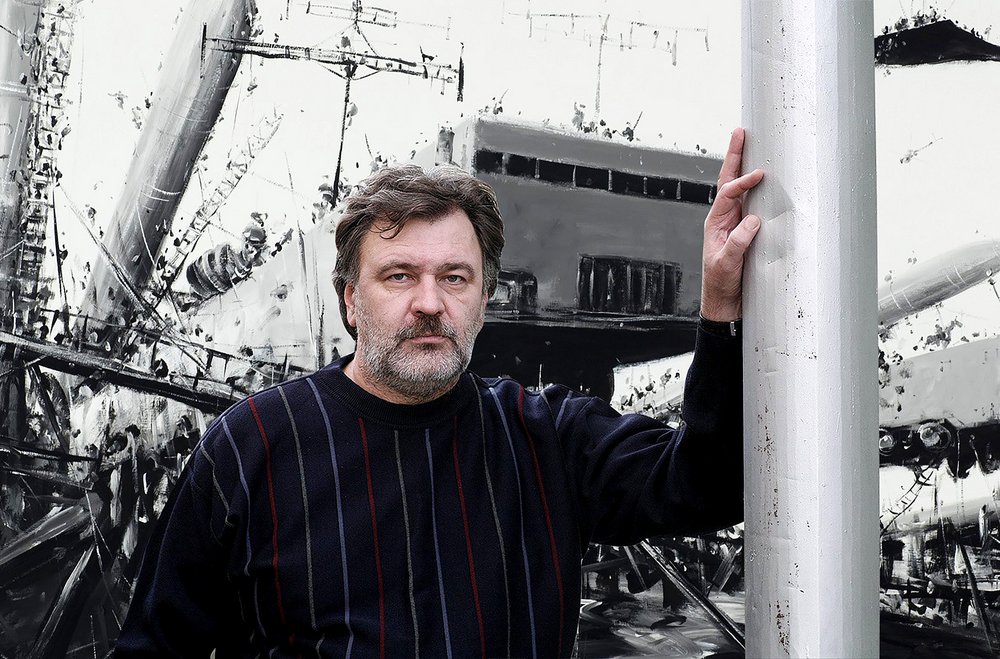
Konstantin Batynkov is ever true to himself: whether he creates paintings, graphics, collages or sculptures made out of snow, his works always tell his own story, which is at once tragic and sublime.
In the mid-1990s, when Konstantin Batynkov made his first Cartography, the maps of the old world were being thrown out and redrawn. The collapse of the Soviet Union had realigned cultural, territorial, and ideological boundaries that had once seemed inviolable, unleashing a “post-Soviet” period that defined itself as much by conflict and confusion as by opportunity and exploration.
It was at this time that Batynkov, the son of a military pilot, began to create his Cartography series. In these works, the artist collaged popular imagery and illustrations of maps, postcards, and various flying machines onto strips of wallpaper or cardboard.
He often left airplanes suspended in a haze of brown, yellow, and blue tones, sometimes to the point of obliterating them entirely. In others, silhouettes of land formations fade in and out of view, filtered through surfaces painted thickly as with the patina of age. Although made of paper, the objects themselves are heavy. Examining them unframed at the Krokin Gallery, which has exhibited his work since 2002, I could feel the weight of the acrylic that the artist applied to the paper strips in order to create a sense of depth and temporality. His earliest works are images of the future, layered with nostalgia.
Since these initial Cartographies, Batynkov, who has recently turned 60, has developed a prolific artistic practice that thrives on reinterpreting heroics, be they artistic, military, cultural, or otherworldly. He often works serially, creating thematic groupings of paintings and drawings to which he then gives generic titles such as “Children,” “Circus,” “Parades,” “Landscapes,” or “Cosmos.”
Though the titles of his works may be generic, their content is much more unusual. One of the ways in which Batynkov creates meaning in his art is by situating something recognisable, such as an everyday object or a familiar building, within a surreal or fantastical landscape. Expressed on canvases that span nearly two metres, this tension between the identifiable and the incomprehensible seems to take on epic proportions. According to gallerist Mikhail Krokin, a robust market of fake Batynkov works now exists — evidence of the artist’s popularity. The breadth of his art will be on view in the exhibition rooms of the Moscow Academy of Arts from 29 May through 30 June. Another exhibition, smaller in scale, will run at Krokin Gallery from 23 May until 23 June.
In his work, Batynkov uses parody, most readily visible in his series "The Drawings of Old Masters" from 2001. In it, he restages scenes by some of art history’s most recognizable painters in rough black ink drawings. Here, it is snowmen, rather than humans, who become the subjects. The works verge between silly and eerie, leaving viewers to wonder whether the images are intended to be playful scraps from art history’s greats or sardonic takeoffs.
Batynkov’s drawings emerged contemporaneously with a large-scale land art project, which he completed in 2000 with the artists Sergei Lobanov and Nikolai Polissky in the bucolic hills of Kaluga Oblast, about 150 kilometers from Moscow. Hiring residents of a village near what is now the Nikola-Lenivets sculpture park, the artists completed a project entitled "Snowmen," which consisted of 220 snowmen shuffling up a hillside, complete with bucket hats and carrot noses. While the project drew criticism for its "childishness," this clever repetition of a winter pastime inspired many others. Since completing Snowmen with Batynkov, Polissky has built numerous land art pieces, including a 90-foot tower of twigs and branches, and inspired many other artists to follow his example during the yearly Archstoyanie festival.
Snowmen are just one group in a strange cast of characters in Batynkov’s projects. "Children" (1996) and "Circus" (2012) add to the fun-house of portraits, which range from the cartoonish to the strange. The clowns in "Circus" unsettle, depicted in aggressive brushstrokes and garish colours. The subjects of "Children" look like effigies, with enlarged limbs and faces as well as darkened eyes. So often romanticized, here childhood appears caught in a nightmarish state.
Snowmen are just one group in a strange cast of characters in Batynkov’s projects. "Children" (1996) and "Circus" (2012) add to the fun-house of portraits, which range from the cartoonish to the strange. The clowns in "Circus" unsettle, depicted in aggressive brushstrokes and garish colours. The subjects of "Children" look like effigies, with enlarged limbs and faces as well as darkened eyes. So often romanticized, here childhood appears caught in a nightmarish state.
One of the ways that Batynkov creates drama in these portraits is through colour contrast. Black paints provide the grounds and contours, which crash against softer dashes of white, pink, orange, and blue. This palette lends his paintings full force, whether the subject is as identifiable as the present-day Moscow Kremlin or as intangible as outer space.
“As I child, I never wanted to become a cosmonaut,” he says, preferring instead to play with toy soldiers, where the battle lines were “clear.” For Batynkov, the challenge continues to be representing the unknown using the materials and sensorial abilities familiar to us. “The cosmos is of course fascinating,” he says, “but it is far away. We live according to earthly experiences, which are understandable to us so you have to compose something that you have only heard, read, or seen in pictures.”
It takes an imagination as expansive as Batynkov’s to continue forging ahead.
Konstantin Batynkov. Life Is Everywhere
Moscow, Russia
29 May – 30 June
Konstantin Batynkov. Life Is Everywhere
Moscow, Russia
23 May – 23 June






